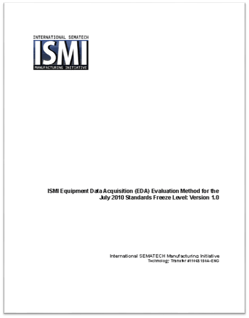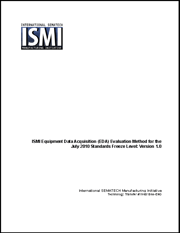In a recent blog posting we introduced the topic of EDA (Equipment Data Acquisition) standards testing and sub-divided the domain into three parts:
-
Compliance testing – does the equipment adhere to the specifications described in the SEMI Standards?
-
Performance and stability testing – does the equipment meet the end users’ performance and availability specifications?
-
Equipment metadata model conformance testing – does the equipment model delivered with the interface represent the tool structure and content anticipated by the end customer?
Today’s post deals with the first of these parts in greater detail.
To begin, we should point out that standards compliance testing is not a new idea – it has been an integral part of the acceptance testing process for automated manufacturing equipment for decades. As each new generation of SEMI’s communications standards (SECS-II, GEM, GEM300, and now EDA / Interface A) reached critical mass, the compliance testing process naturally evolved from an ad hoc, manually driven set of procedures to a more thorough, formal process supported by automated testing software. Moreover, the use of this kind of software and the reliance of leading chip makers on its results has greatly contributed to the efficiency of the overall new fab startup and initial yield ramp process, so its importance to the industry cannot be overstated.
So where does the industry turn for information about how to test for EDA standards compliance?Although the Sematech manufacturing consortium’s R&D program no longer includes SEMI Standards definition, validation, and promotion support, the work that its ISMI subsidiary (International Sematech Manufacturing Initiative) did in the formative years of the EDA standards is still directly applicable. In particular, the “ISMI Equipment Data Acquisition (EDA) Evaluation Method for the July 2010 Standards Freeze Level: Version 1.0” is the globally accepted approach for checking compliance of an equipment’s EDA interface.

This document takes an automation test engineer through the entire set of steps for connecting a tool to a known-compliant test client (in this case, the Cimetrix Equipment Client Connection Emulator, or ECCE Plus product), adding entries to the interface’s Access Control List (ACL), uploading and inspecting the equipment metadata model, managing Data Collection Plans (DCPs), and invoking all the other services defined by the SEMI EDA Standards suite (E120, E125, E132, E134, E164, etc.). Its appendices not only define the required procedures in detail, they also describe the expected results and suggest a format for reporting these to interested stakeholders.
Of course, those familiar with the use of this method and the associated software tools know that it can take 2-3 days to execute this process manually, which is an inefficient way to check compliance for the incoming tool set of an entire fab. Fortunately, there IS a better approach. Cimetrix has automated these evaluation procedures in a way that ensures the target equipment meets the automation software purchasing requirements to the satisfaction of both the equipment supplier and the semiconductor manufacturer, while leaving the door open for factory-specific requirements that represent unique competitive advantage.
Note that ISMI and its member companies also recognized that much of the potential value of the EDA standards would be derived from (and limited by!) the content of the equipment metadata model, so they funded the development of another software tool to check these aspects of a supplier’s implementation. But that is a topic for an upcoming blog – watch for it.
So… if you want to know more about EDA testing and/or discuss your specific needs, contact Cimetrix for a demonstration of this exciting new capability!
Alan Weber
VP, New Product Innovations
Cimetrix Incorporated






